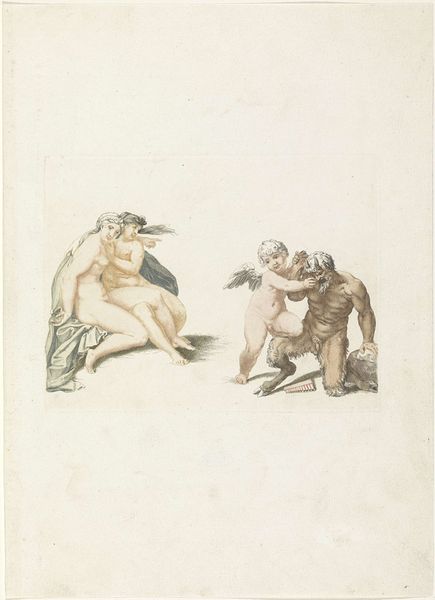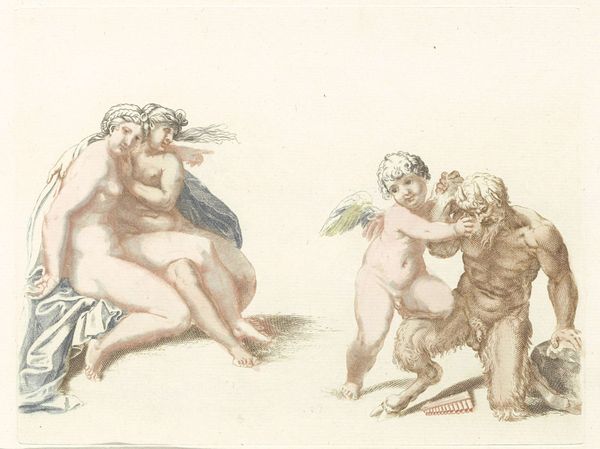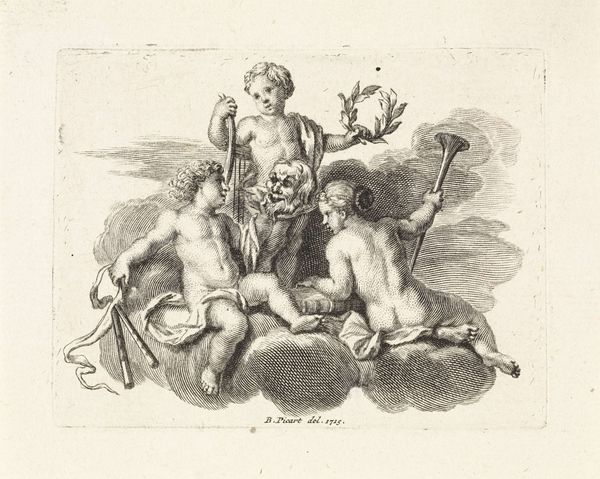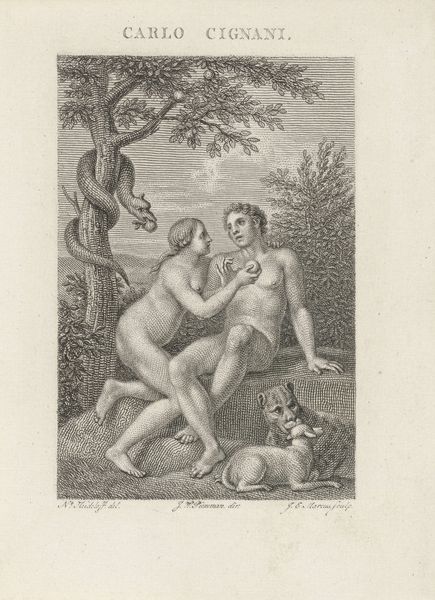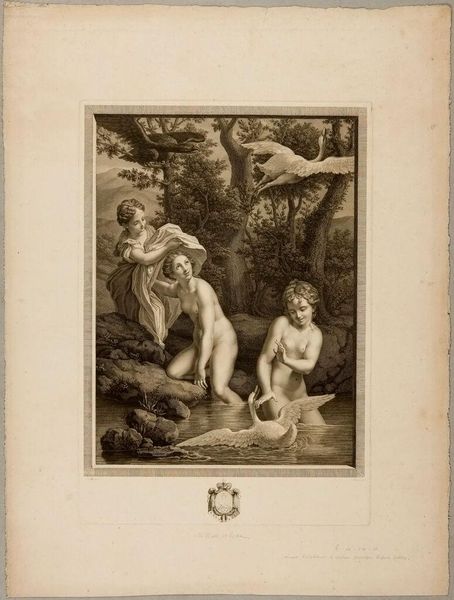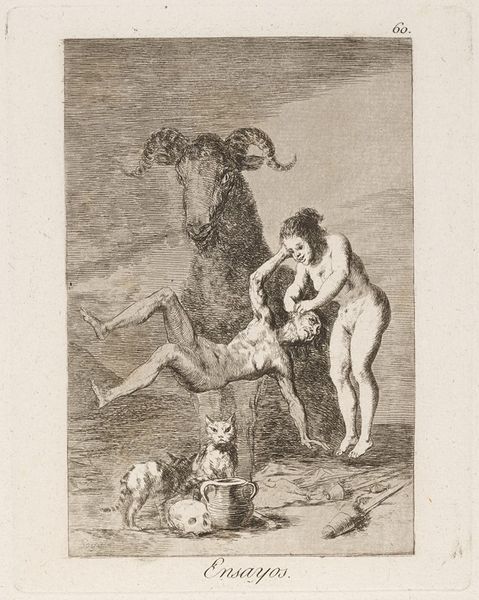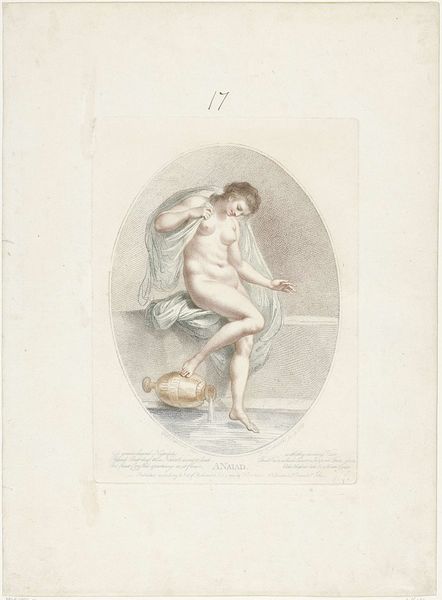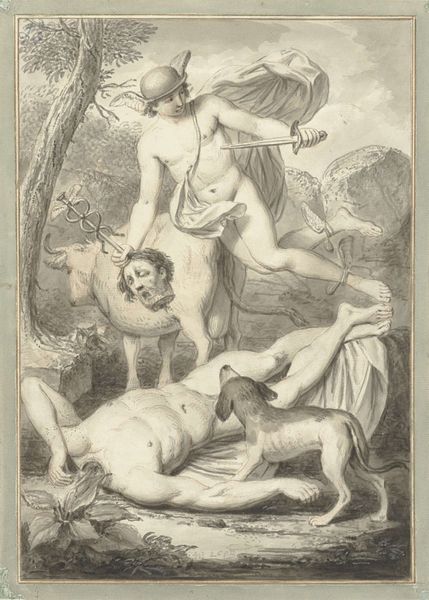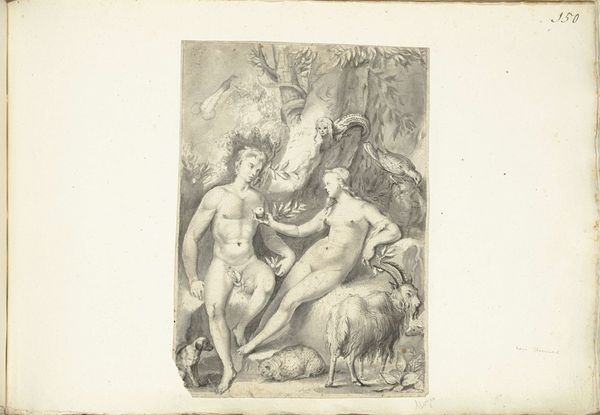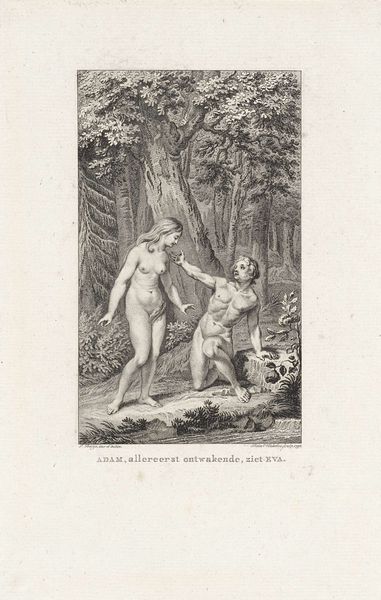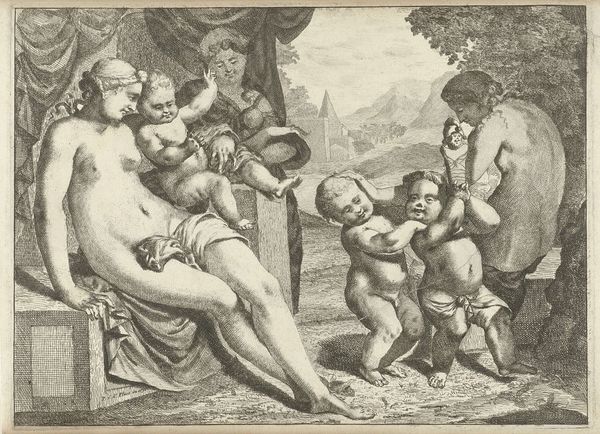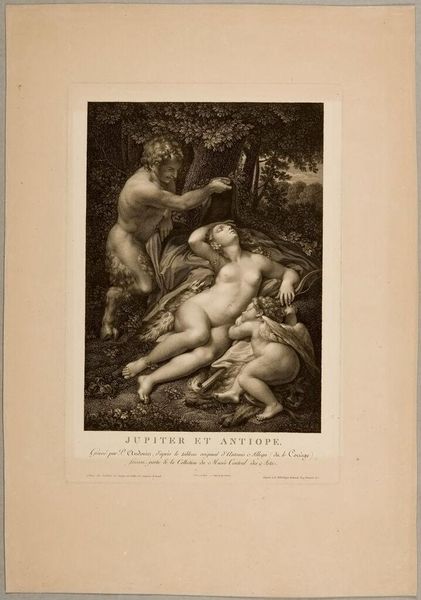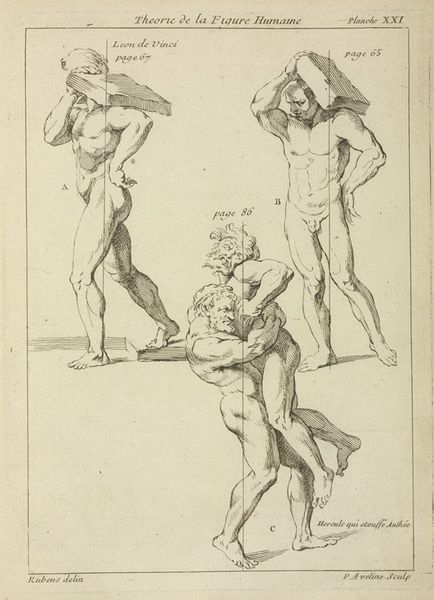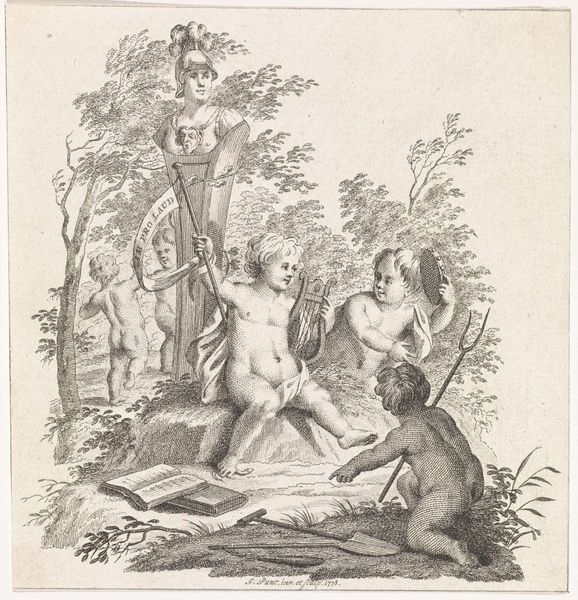
drawing, watercolor, graphite
#
drawing
#
allegory
#
baroque
#
charcoal drawing
#
figuration
#
watercolor
#
graphite
#
graphite
#
erotic-art
Dimensions: height 135 mm, width 174 mm
Copyright: Rijks Museum: Open Domain
Editor: So, this drawing, "Amor bestraft een sater," which translates to "Cupid Punishing a Satyr," is from between 1688 and 1698, and the artist is anonymous. It’s rendered in graphite and watercolor and it's at the Rijksmuseum. The contrast between the classical figures and the brutal act of punishment feels strange. What’s your read on it? Curator: Well, considering this piece was created during the Baroque period, we can examine its place within the cultural and social landscape. Erotic themes were frequently explored, reflecting both the artistic interest in the human form and the societal fascination with mythological narratives. How do you think the concept of ‘punishment’ plays into the reception of this image, especially given its public display in a museum today? Editor: That's a great question! Seeing Cupid as this punishing figure definitely challenges the usual associations of love and innocence. I guess back then it might have served as a cautionary tale, but in a modern museum setting, I wonder if it's meant to be more provocative or ironic. Curator: Precisely. The display itself transforms its meaning. The Rijksmuseum, as an institution, takes on a role in shaping the audience’s perception, doesn't it? Does placing this image of a cupid in an important national museum impact your viewing of the artwork? Editor: It definitely does. The museum context gives it weight. If I saw it in a textbook, I might just skim past it, but knowing it’s in the Rijksmuseum makes me think there's more to unpack, a story to understand about how we see art and sexuality across time. Curator: Exactly. The piece’s power lies in this historical journey and institutional validation and also how that shapes present-day responses and dialogues about the artwork's value and meaning within broader historical and social narratives. Editor: I never thought about it like that - how the institution shapes what we see, so thank you!
Comments
No comments
Be the first to comment and join the conversation on the ultimate creative platform.
